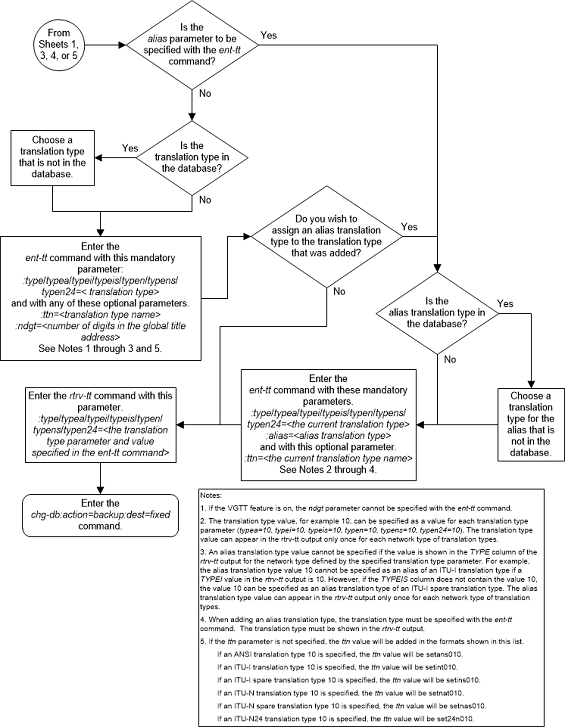| Oracle® Communications EAGLE Database Administration - GTT User's Guide Release 46.8 F11880-02 |
|
 Previous |
 Next |
| Oracle® Communications EAGLE Database Administration - GTT User's Guide Release 46.8 F11880-02 |
|
 Previous |
 Next |
This procedure is used to add a translation type to the
database using the
ent-tt command.
The
ent-tt command uses these parameters.
:type/typea/typei/typeis/typen/typens/typen24 – The
translation type and network type of that translation type. The translation
type indicates which global title translation table is to be used to determine
the routing to a particular service database. The value of this parameter is
from 0 to 255.
:type or
::typea – an ANSI network
:typei – an ITU
international network
:typeis – an ITU
international spare network
:typen - a 14-bit
ITU national network.
:typens - a
14-bit ITU national spare network.
:typen24– a
24-bit ITU national network.
:ttn
– The name of the global title translation type, containing
one alphabetic character and up to eight alphanumeric characters.
:ndgt – The number of
digits, 1 to 21 digits, contained in the global title translation.
:alias – The alias of
the global title translation type. The value of this parameter is from 0 to
255.
The translation type value, for example 10, can be
specified as a value for each translation type parameter (typea=10,
typei=10,
typeis=10,
typen=10,
typens=10,
typen24=10). The translation type
value can appear in the
rtrv-tt output only once for each
network type of translation types.
An alias translation type value cannot be specified if
the value is shown in the
TYPE column of the
rtrv-tt output for the network type
defined by the specified translation type parameter. For example, the alias
translation type value 10 cannot be specified as an alias of an ITU-I
translation type if a
TYPEI value in the
rtrv-tt output is 10. However, if the
TYPEIS column does not contain the
value 10, the value 10 can be specified as an alias translation type of an
ITU-I spare translation type. The alias translation type value can appear in
the
rtrv-tt output only once for each
network type of translation types.
When adding an alias translation type, the translation
type must be specified with the
ent-tt command. The translation type
must be shown in the
rtrv-tt output.
Either the
ndgt parameter or the
alias parameter can be specified with
the
ent-tt command, but not both at the
same time.
The translation type name value specified with the
ent-tt command cannot be shown in the
rtrv-tt output.
type/typea parameter is specified with the
ent-tt command, the
NETDOM value of the GTT set is ANSI.
If the
typei,
typeis,
typen,
typens, or
typen24 parameter is specified with
the
ent-tt command, the
NETDOM value of the GTT set is ITU.
The
ttn parameter value of the
ent-tt command defines the name of the
GTT set. if the
ttn parameter is not specified with
the
ent-tt command, a default name for the
GTT set is created. These are examples of the default GTT set names.
dflt - for ITU GTT selectors only.
ANSI GTT selectors can only contain dashes in this column.
dflt - for ITU GTT selectors only.
ANSI GTT selectors can only contain dashes in this column.
none
any
If a GTT set is in the database with the same name as the ttn parameter value or the default GTT set name, the translation type will not be added to the database.
The global title translation feature must be turned on.
Verify this by entering the
rtrv-feat command. If the global title
translation feature is off, it can be turned on by entering the
chg-feat:gtt=on command.
Note:
Once the Global Title Translation (GTT) feature is turned on with thechg-feat command, it cannot be turned
off.
The GTT feature must be purchased before turning it on. If you are not sure whether you have purchased the GTT feature, contact your Sales Representative or Account Representative.
If the Variable-length Global Title Translation Feature
(VGTT) is on, shown by the entry
VGTT = on in the
rtrv-feat command output, or the
Support for 16 GTT Lengths in VGTT feature is enabled and turned on, shown by
the entry
VGTT with 16 Lengths in the
rtrv-ctrl-feat output, the
ndgt parameter cannot be specified
with the
ent-tt command. The length of the
global title address is determined when the global title address is entered
with the
ent-gtt command. If only the VGTT
feature is on, the translation type can contain a maximum of ten different
lengths of global title addresses. If the Support for 16 GTT Lengths in VGTT
feature is enabled and turned on, the translation type can contain a maximum of
16 different lengths of global title addresses. For more information on the
VGTT feature, the Support for 16 GTT Lengths in VGTT feature, and the length of
global title addresses, refer to
Variable-length Global Title Translation Feature
and
Adding a Global Title Translation.
If the Variable-length Global Title Translation Feature
(VGTT) is on, the
NDGT field of the
rtrv-tt command shows the different
lengths of global title addresses assigned to a translation type, as shown in
the following example.
rlghncxa03w 10-07-25 09:57:31 GMT EAGLE5 42.0.0 TYPEA TTN NDGT 1 lidb 6, 12, 15 2 c800 10 3 d700 6 ALIAS TYPEA 50 3 65 3 TYPEI TTN NDGT 105 itudb 8 ALIAS TYPEI 7 105 TYPEN TTN NDGT 120 dbitu 7 ALIAS TYPEN 8 120 TYPEIS TTN NDGT ALIAS TYPEIS TYPENS TTN NDGT ALIAS TYPENS
In this example of the
rtrv-tt command output, the ANSI
translation type 1 contains three different length global title addresses;
global title addresses containing six digits, 12 digits, and 15 digits.
If the Variable-length Global Title Translation Feature
(VGTT) feature is off and you wish to turn it on, enter the
chg-feat:vgtt=on command. The GTT
feature must be on before the
vgtt=on parameter can be specified
with the
chg-feat command.
Note:
Once the Variable-length Global Title Translation (VGTT) feature is turned on with thechg-feat command, it cannot be
disabled.
The VGTT feature must be purchased before turning it on. If you are not sure whether you have purchased the VGTT feature, contact your Sales Representative or Account Representative.
Figure 3-1 Add a Translation Type - Sheet 1 of 6
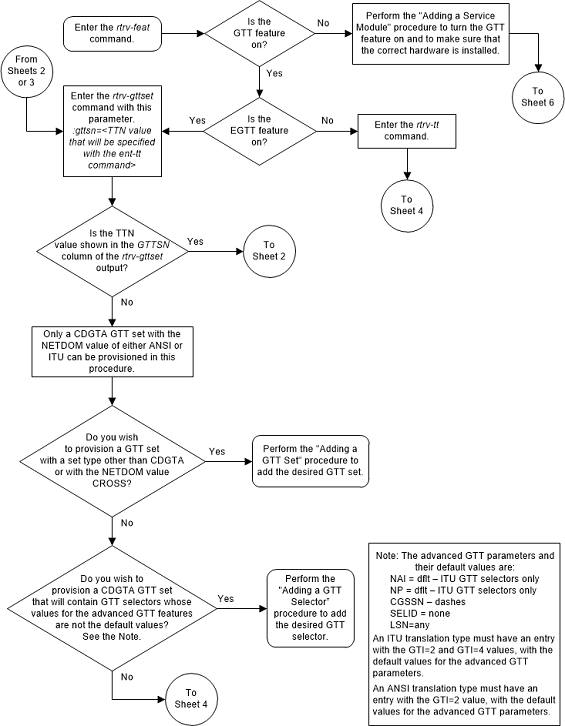
Figure 3-2 Add a Translation Type - Sheet 2 of 6
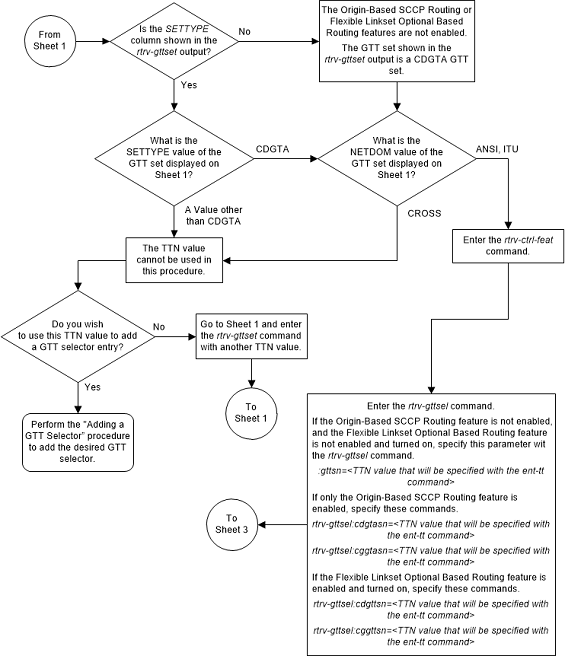
Figure 3-3 Add a Translation Type - Sheet 3 of 6
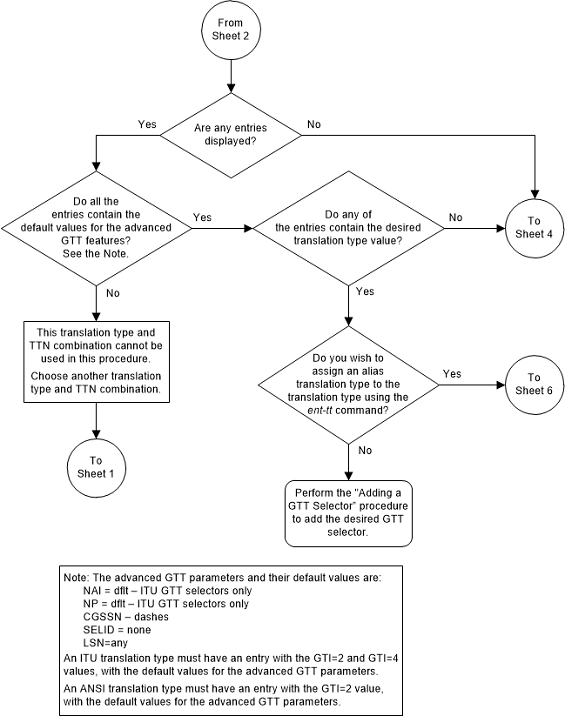
Figure 3-4 Add a Translation Type - Sheet 4 of 6
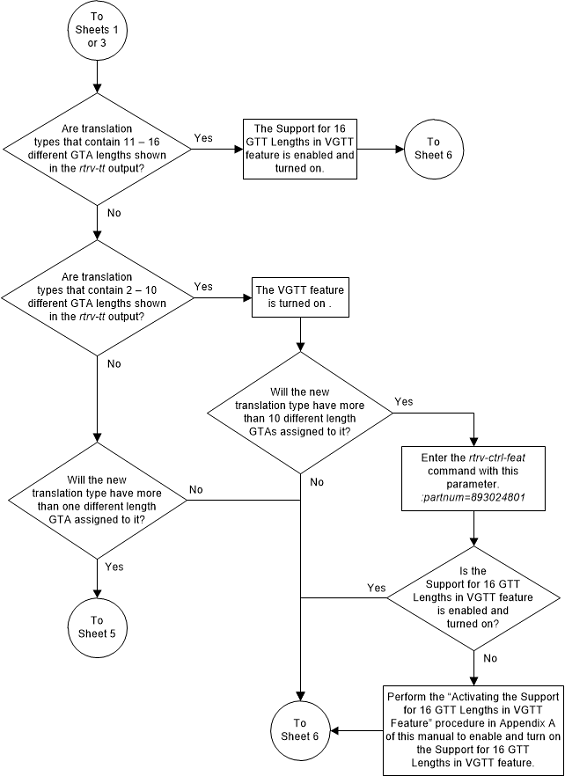
Figure 3-5 Add a Translation Type - Sheet 5 of 6
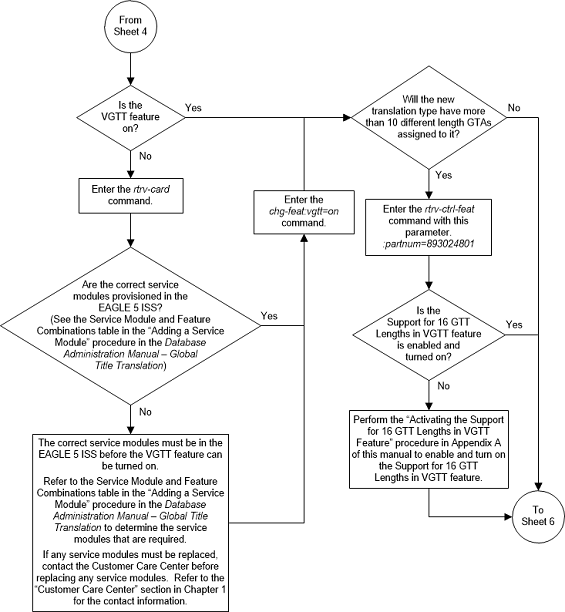
Figure 3-6 Add a Translation Type - Sheet 6 of 6
